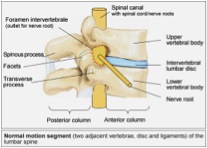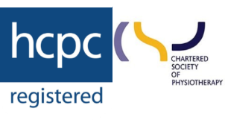Our lifestyles have changed dramatically in the past thirty to forty years. As we see ourselves spending more and more time sitting down at computers and televisions, we are also seeing neck pain becoming increasingly common throughout the world. Neck pain has now joined back pain as the two most common pain locations in the body.
Acute neck pain (pain that manifests abruptly) generally has little to do with this change in our society, but can be caused by sudden jerky movements of the head and neck, or by trauma injuries from sporting accidents and falls.
Whiplash occurs when the head is suddenly moved backwards and forwards, causing the muscles and ligaments of the neck to strain and in some cases tear. Whiplash is commonly experienced in rear-end car collisions and can produce pain and aching to the neck and back, referred pain to the shoulders, and often headaches.
Simple neck pain implies pain that arises due to relatively minor problems with the muscles, ligaments and joints of the neck. Simple neck pain can come on after a minor injury or sprain but in many cases no injury can be identified. It can arise after something as simple as sleeping badly in bed at night. This type of pain comes about because the sprained tissue becomes inflamed and causes pain signals to be sent to the spinal cord.
However, most neck pain that is not caused by whiplash or trauma has a postural component as part of the underlying problem. Sitting in front of a computer with bad seating and posture frequently leads to muscular pain in the neck, back and shoulders.
It is estimated that 45% of the working population is affected by neck pain. Therefore it is very important to understand the different aspects of poor posture that contribute to this type of pain in order to prevent and manage it.
A common cause of postural neck pain is the Forward Head and Shoulder posture. This occurs when the neck slants forward, placing the head in front of the shoulders. (This can be observed while working at a computer, laptop, ipad, iphone, T.V., driving for example.) This position places undue stress on the vertebrae of the lower neck. The muscles of the upper back are also continually overworked to counter-balance the pull of gravity on the forward head.
Forward shoulders and a rounded upper back with increased extension of the cervical spine often accompany this position is also commonly seen. This leads to very tight pectoral muscles and causes a lot of tension between the shoulders as well as contributing to the neck pain. Physiotherapy assessment to and treatments such as manual therapies, massage and stretching can help ease symptoms. Postural reeducation is key. A patient specific exercise program to help mobilize and strengthening the back, neck and shoulders in order to pull the shoulders back into a neutral position can alleviate some of this tension and pain. Stretching before and at intervals during the working day can also do wonders for tight, tired muscles.
Another way to minimise the risk of developing postural neck pain, or to manage it if you already suffer from it, is to adjust your workspace around you so that you can work comfortably.
Desk
- Most desks have a fixed height; therefore it is important to ensure you have an adjustable height chair so that your arms can operate the keyboard comfortably
Chair
- Always sit as far back as possible in the seat so that your lower back is well supported
- The back of the chair should be high to support the middle back
- Your chair height should let you type with your forearms placed horizontally on the keyboard
- Try to keep your feet flat on the ground, if your feet dangle off the ground when you’re sitting fully back in the chair, using a foot rest is a good idea
Keyboard
- Pull up close to your keyboard
- Position it directly in front of your body
- Wrist rests can help maintain a neutral wrist position when you are taking a break from typing but are not recommended for use during typing as typing in this position may cause carpal syndrome in the wrist
If you are suffering with neck, shoulder or upper back pain why not contact our Brighton physiotherapy clinic today. One of highly trained physiotherapist will be more than happy to guide you on the road to recovery.












